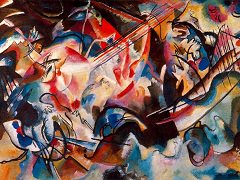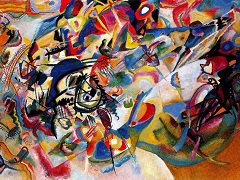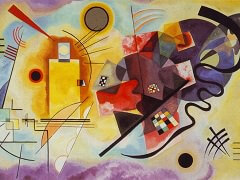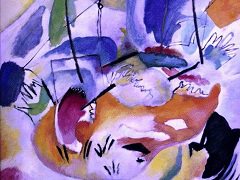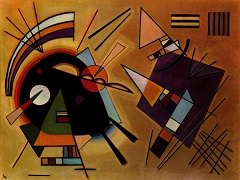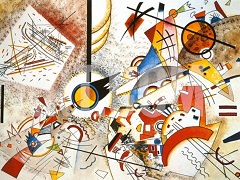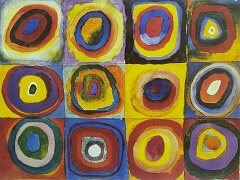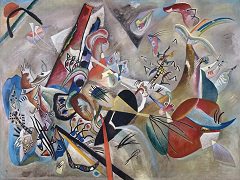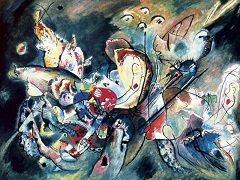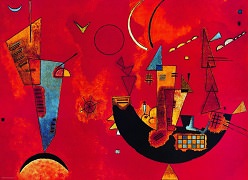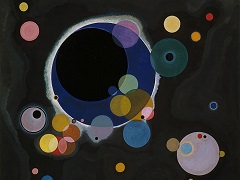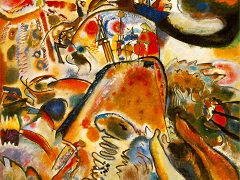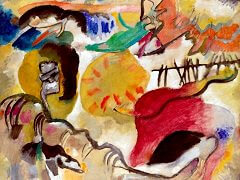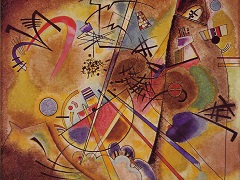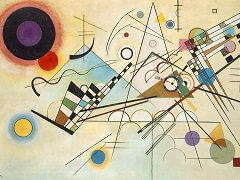Sunday: Old Russia, 1904 by Wassily Kandinsky
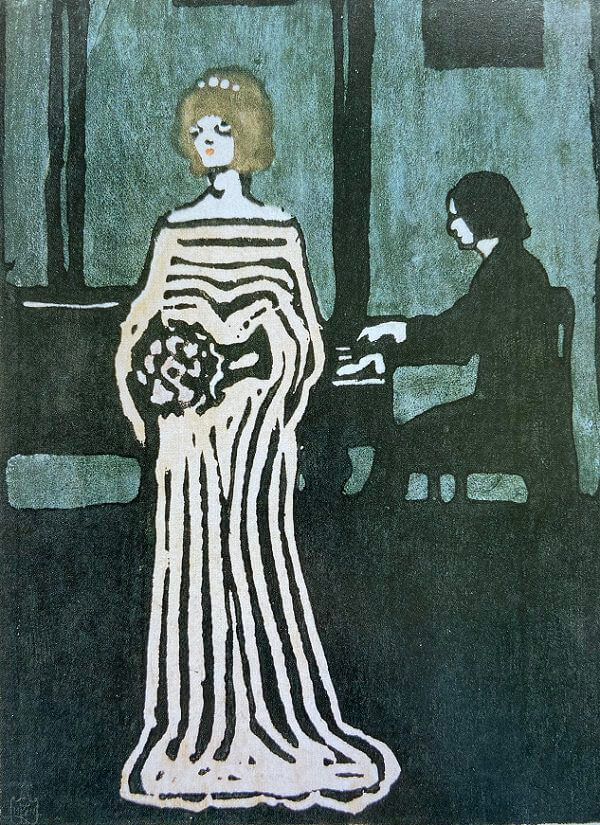
This Art Nouveou portrait of a singer and pianist is typical of both the style of the period and one of Kandinsky's preoccupations, music. In the following year to this work, the artist produced a series of woodcuts which he called 'Xylographs', another term used historically for woodcuts, but which also reflected Kandinsky's musical interests not least because of the similarity with the word xylophone.
The design is typical of Art Nouveau in the use of the 'whiplash' lines for the singer's dress, and in the highly decorative aspects of the composition. Kandinsky printed a number of copies of this image using one colour, usually either black or sepia depending on the final effect he sought. Each print would then be hand coloured by the artist, again according to the required finish.
The revival of woodcuts was probably more pronounced in Germany than elsewhere in Europe in the early years of the twentieth century, with artists such as Ernst Ludwig Kirchner (1880-1938) and the Die Brucke ('The Bridge'). It was used by them, as Van Gogh had used paint, in a very expressive manner,

